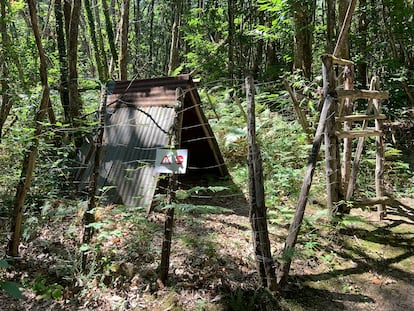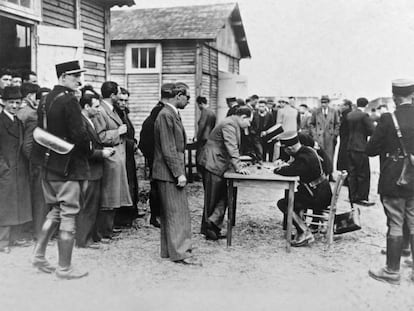The dark side of the French Resistance: four graves in the forest
Even those on the right side of history can commit atrocities, and revealing them is no longer considered unpatriotic or harmful

European history has seen significant changes in the narrative of the French Resistance’s battle against the Nazis. Charles de Gaulle, a prominent post-World War II figure, crafted a patriotic story where thousands of men and women defended France and freedom itself. The real story is about the clash between Vichy supporters and all the Nazi opponents — communists, nationalists, Jews and Spanish Republicans fighting for freedom and survival.
Thanks to historians, survivors and films like Lacombe, Lucien (1974), The Two of Us (1967), and Goodbye, Children (1987), France is confronting its uncomfortable past. Acknowledging that French police — not just the SS and Gestapo — were involved in large-scale deportations of Jews was a significant step. On February 21, foreign resistance fighters executed by the Nazis, including Missak Manouchian of Armenia and Celestino Alfonso of Spain, were honored at the Panthéon in Paris, acknowledging the global citizens who fought for freedom in France.

Robert Gildea’s excellent Fighters in the Shadows: A New History of the French Resistance (2015) reveals that Spanish Republicans played an important role in the liberation of Toulouse, and describes how they participated in a parade wearing German helmets painted blue. “What are all those Spaniards doing marching with the Free French Forces?” exclaimed de Gaulle when he saw so many Republicans. In that area, Jean-Pierre Vernant, a French historian and anthropologist, served as the rural guerrilla commander and was later hailed as a hero. Despite being awarded Companion of Liberation honors, Vernant never boasted about his role in war and believed the true heroes were the ones who didn’t survive. He also wasn’t comfortable with the official narrative that emerged after the war.
However, France has bravely confronted its darkest past. Even those on the right side of history can commit atrocities, and revealing them is no longer considered unpatriotic or harmful. The same applies to those who deny Franco’s repression in Spain or people who view the colonization of America as a blessing for indigenous peoples.

In Perigord, a region in central France known for foie gras and prehistoric caves, a French Resistance camp has been reconstructed in the Maquis of Durestal forest, near Cendrieux. The historically accurate camp with explanatory posters was a hideout used by André Malraux, the well-known Resistance leader. The camp includes a command center, training grounds for guerrillas, basic sleeping quarters, guard posts, an improvised prison, and a prisoner execution site. Four graves of executed prisoners can be seen there — real ones, not reconstructions.
Sign up for our weekly newsletter to get more English-language news coverage from EL PAÍS USA Edition
Tu suscripción se está usando en otro dispositivo
¿Quieres añadir otro usuario a tu suscripción?
Si continúas leyendo en este dispositivo, no se podrá leer en el otro.
FlechaTu suscripción se está usando en otro dispositivo y solo puedes acceder a EL PAÍS desde un dispositivo a la vez.
Si quieres compartir tu cuenta, cambia tu suscripción a la modalidad Premium, así podrás añadir otro usuario. Cada uno accederá con su propia cuenta de email, lo que os permitirá personalizar vuestra experiencia en EL PAÍS.
¿Tienes una suscripción de empresa? Accede aquí para contratar más cuentas.
En el caso de no saber quién está usando tu cuenta, te recomendamos cambiar tu contraseña aquí.
Si decides continuar compartiendo tu cuenta, este mensaje se mostrará en tu dispositivo y en el de la otra persona que está usando tu cuenta de forma indefinida, afectando a tu experiencia de lectura. Puedes consultar aquí los términos y condiciones de la suscripción digital.
More information
Archived In
Últimas noticias
Most viewed
- Oona Chaplin: ‘I told James Cameron that I was living in a treehouse and starting a permaculture project with a friend’
- Sinaloa Cartel war is taking its toll on Los Chapitos
- Reinhard Genzel, Nobel laureate in physics: ‘One-minute videos will never give you the truth’
- Why the price of coffee has skyrocketed: from Brazilian plantations to specialty coffee houses
- Silver prices are going crazy: This is what’s fueling the rally











































